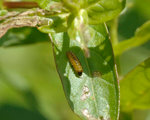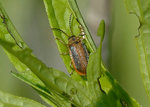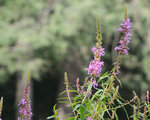 Narrowsburg
NarrowsburgLight Rain Fog/Mist, 43°
Wind: 8.1 mph
 Narrowsburg
NarrowsburgAs August arrives, you may have noticed some purple flowers starting to pop out from road-sides, or perhaps along your favorite fishing lake or pond. You may even spot a few in a field by your home. …
Stay informed about your community and support local independent journalism.
Subscribe to The River Reporter today. click here
This item is available in full to subscribers.
Please log in to continue |



As August arrives, you may have noticed some purple flowers starting to pop out from road-sides, or perhaps along your favorite fishing lake or pond. You may even spot a few in a field by your home. They may look attractive enough to transplant to your garden. Save yourself some frustration; the purple inflorescence you see is probably that of the invasive purple loosestrife plant.
Purple loosestrife is present throughout the region and the flowers become visible from late July to the start of August. It prefers wetlands, shoreline areas, roadsides and fields. Its invasive quality is that it will displace native species present. Areas overtaken by purple loosestrife suffer from habitat degradation due to the fact that food plants used by other species are no longer present. Soil erosion into waterways may also increase as the more efficient soil retaining native species of plants are no longer present.
Purple loosestrife is easy to spot now with its purple flowers at the top of the stem. If a few plants are found on your property, they can be pulled out by the roots. A shovel may be needed for larger plants that are well-rooted. Dispose of the plants, or at least the flower/seed heads so that the seeds do not spread. Seeds may lie dormant for several years if underwater, so there may be repeat growth the following year in some areas. Herbicides may be necessary for large infestations; a licensed applicator should be used, especially near water.
There are a family of beneficial insects that feed on purple loosestrife. Galerucella calmariensis and G. pusilla are two species of beetles that are used by agencies in many areas to control purple loosestrife. The National Park Service released some beetles along the main stem of the Delaware River in our region, and the predation of purple loosestrife was studied during subsequent years. Galerucella beetles are host-specific to purple loosestrife and show promise of being effective in the Upper Delaware River study.
Comments
No comments on this item Please log in to comment by clicking here